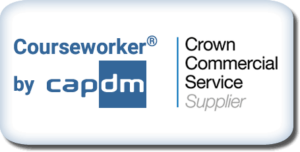At an event like #OLS23, full of interesting online learning folk, some of the best chat takes place outside the main auditorium over coffee or lunch. You have to be ready to strike up conversations with strangers – which I must admit has never been my strong suit – but the good thing about this event was that there was always something thought-provoking from the preceding sessions with which to open a discussion.
So I had quite a number of interesting ten-minute chats, and one of the recurring themes was the trials and tribulations of online learning platform migrations. If people hadn’t just finished a painful switchover from Moodle to Canvas, or Blackboard to Moodle, then they were managing a multiple-VLE setup or had inherited some complicated set of courses and platforms that were proving challenging to maintain.
Unrealistic expectations
Often LMS platform policy was being dictated from several grades above, and there were some common frustrations:
“We liked the existing system, it worked really well for us and while the new one looks nicer it lacks lots of the features we used to rely on.”
“My boss had totally unrealistic expectations about how much effort it would take to transfer the courses.”
“We hadn’t realised what a mess lots of the courses had got into over time, and it took ages to even work out how to structure things on the new platform.”
“It feels like we’re just making the same mistake putting all this effort into the new platform, because they’re bound to change their minds again next year.”
Whether you are moving to a new platform, merging platforms or maintaining multiple platforms, the pain of online learning platform migrations is real. And it’s interesting that in recent months there has been quite a lot of marketing activity in the UK HE press from companies selling tools that seek to make this process easier.
One such company is Arizona-based K16 Solutions, which offers an evolving set of tools and services to help with VLE and student administration system migrations. But whether a university team is using an external tool of that kind or applying home-grown solutions to VLE migration, the basic problem remains that completing this process doesn’t actually solve the underlying issue, it just sets up the next occurrence of it.

Learning platforms aren’t content management systems, they are delivery environments. So your master content for any given course shouldn’t live in your learning platform, it should be built and maintained separately and uploaded into your VLE (or VLEs) as required.
The aim shouldn’t just be to solve the immediate challenge of migration, because that just means the same problem will be waiting for you at the next migration. The aim should be to build a publishing system that copes with VLE migration without fuss, by separating the building and maintenance of your courses from their deployment.
Can structured semantic learning help?
Adopting structured semantic learning content means you are creating learning independent of your current delivery environment, focusing on your pedagogy not your VLE’s features. As long as the publishing environment you choose supports all the VLEs you want to use, then the very act of adopting structured semantic learning solves the online learning platform migrations problem for you. Job done!
Of course new VLEs will come along, and it’s therefore critical that your publishing environment is also well-maintained and able to evolve to support new outputs. But such capacity is really intrinsic to the structured semantic model – it is already designed to enable easy outputs into multiple formats, so just adding another one is unlikely to be a big challenge.
Cost reduction
Future-proofing your courses against changes in technology – whether that be VLE migrations, AI developments or something nobody has even thought of yet – is a core benefit of the investment in structured semantic learning content.
Another core benefit is cost reduction. And that’s not always something you can say about integrating a structured semantic publishing workflow into your course building process. The first time you use it for a programme of learning it’s generally not a low-cost thing to do; it’s an investment, in systems and training and staff, and there can be a steep learning curve.
But as soon as you use it for a second programme, it starts saving you money. A third, even more. And when you need to migrate from one VLE to another, or start to support multiple VLEs in tandem, it becomes a huge cost and time saver.
Nobody who’s been through a large-scale VLE migration ever wants to do it again. So let’s all adopt structured semantic learning content, and we won’t have to!
What do we mean by structured semantic learning content?
- Building and cherishing your learning materials consistently in a way which captures both structure and meaning.
- Creating learning independent of your current delivery environment, focusing on your pedagogy not your VLE’s features.
- Using efficient publishing techniques to enable your content to be delivered rapidly into your current VLE, your next VLE, in print and in a range of other formats.
- Cleanly and seamlessly combining your unique intellectual property with publishers’ textbook content as required.
- Courseworker by CAPDM is based on structured semantic learning content.


